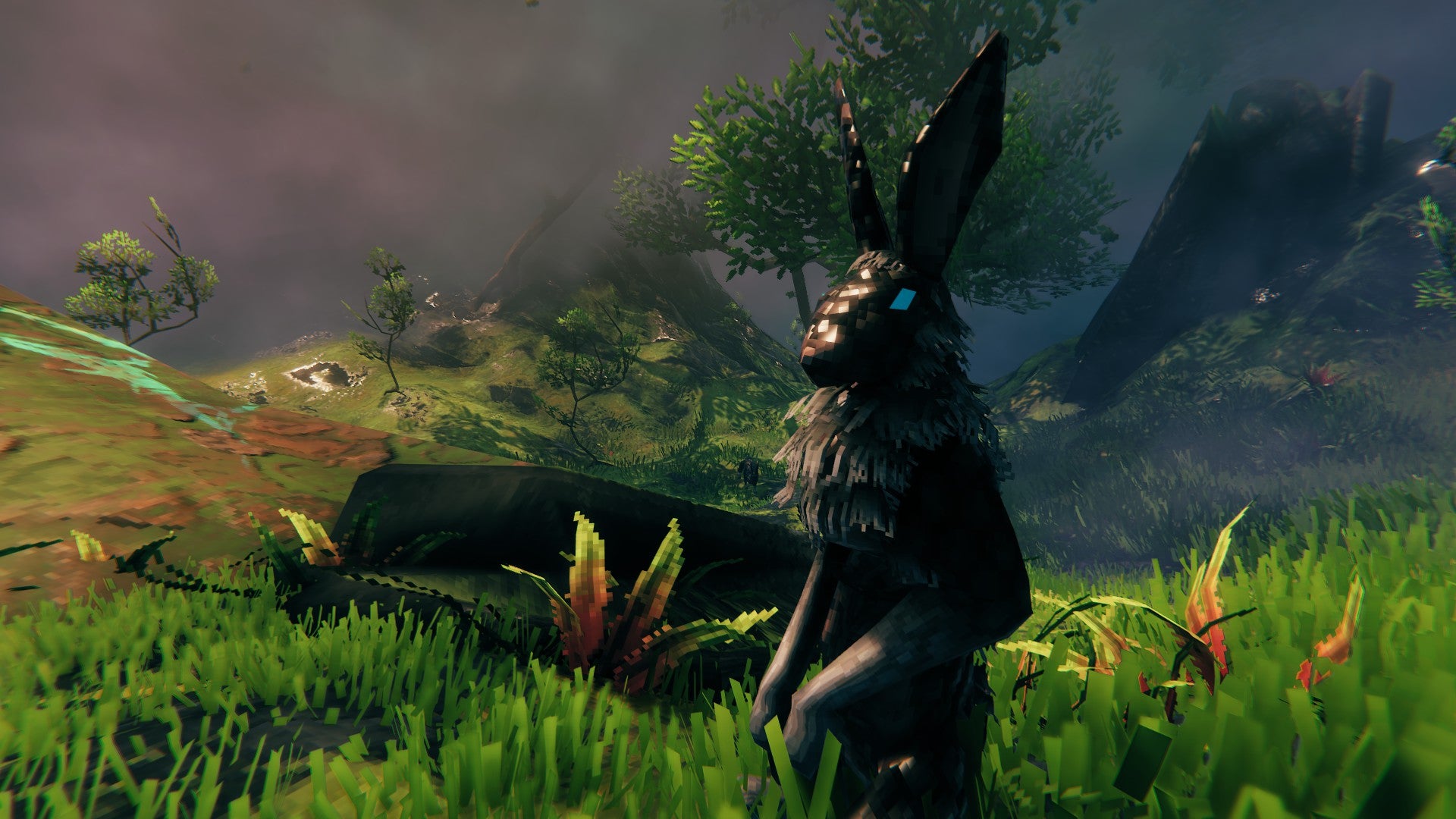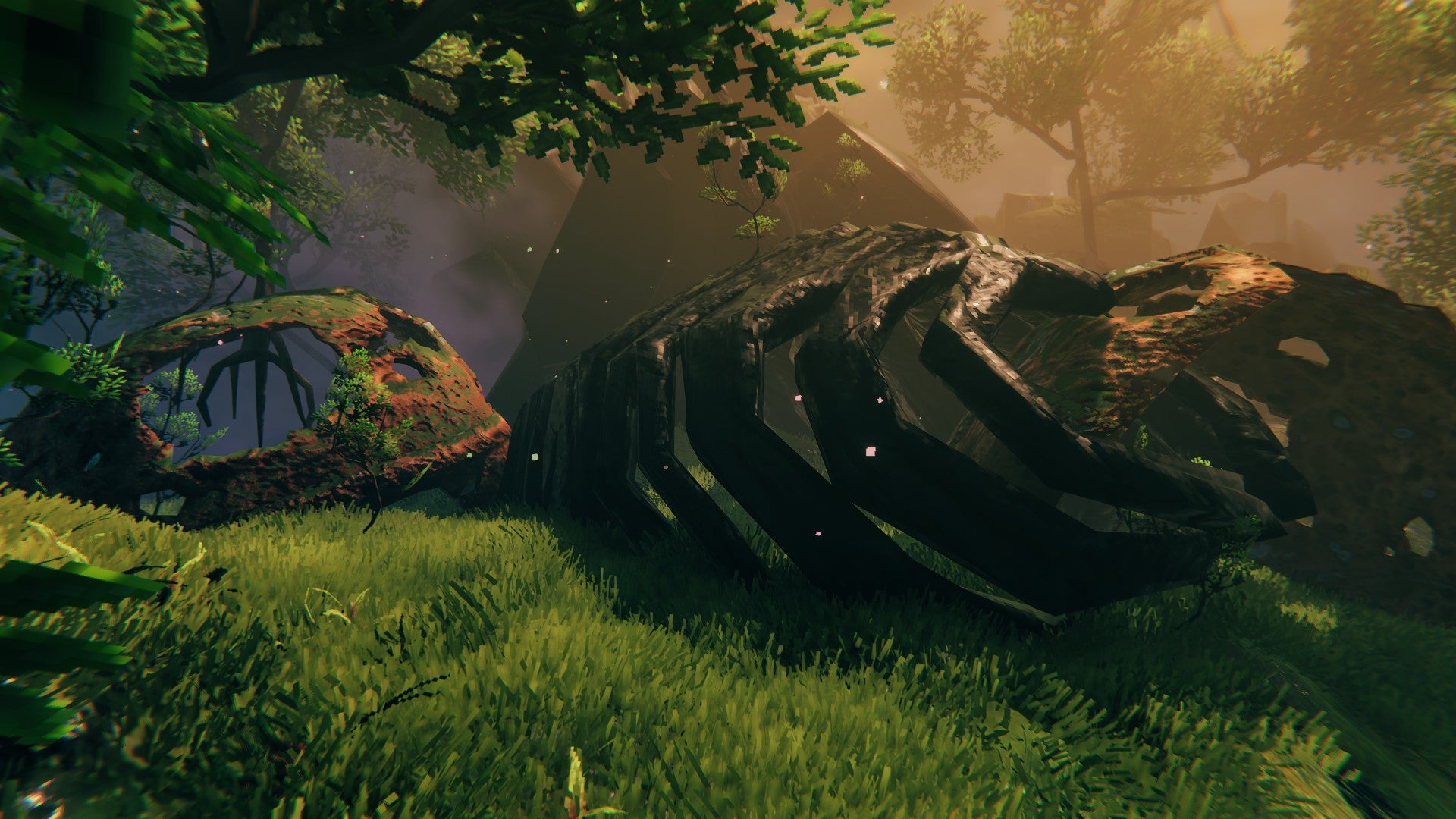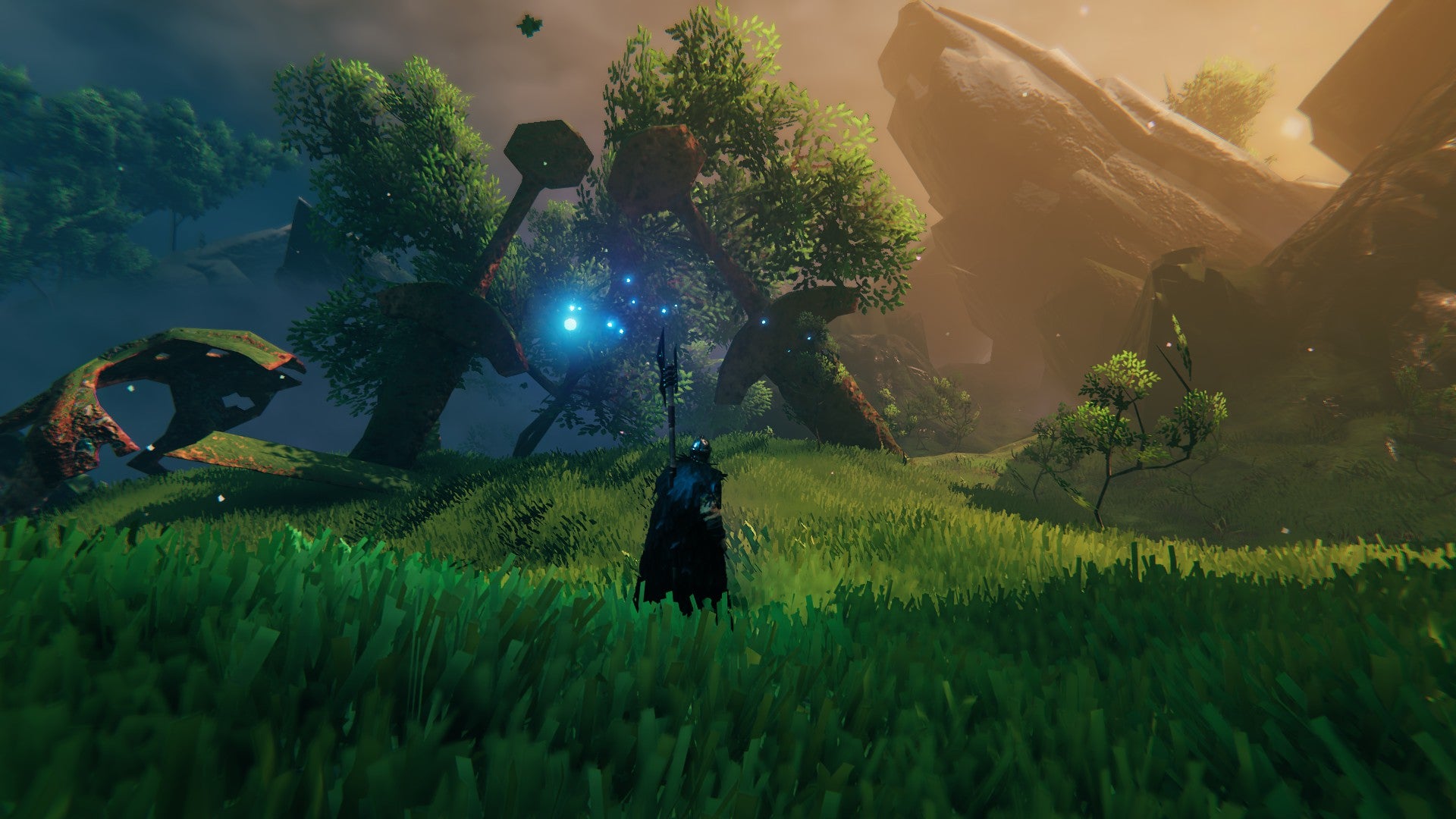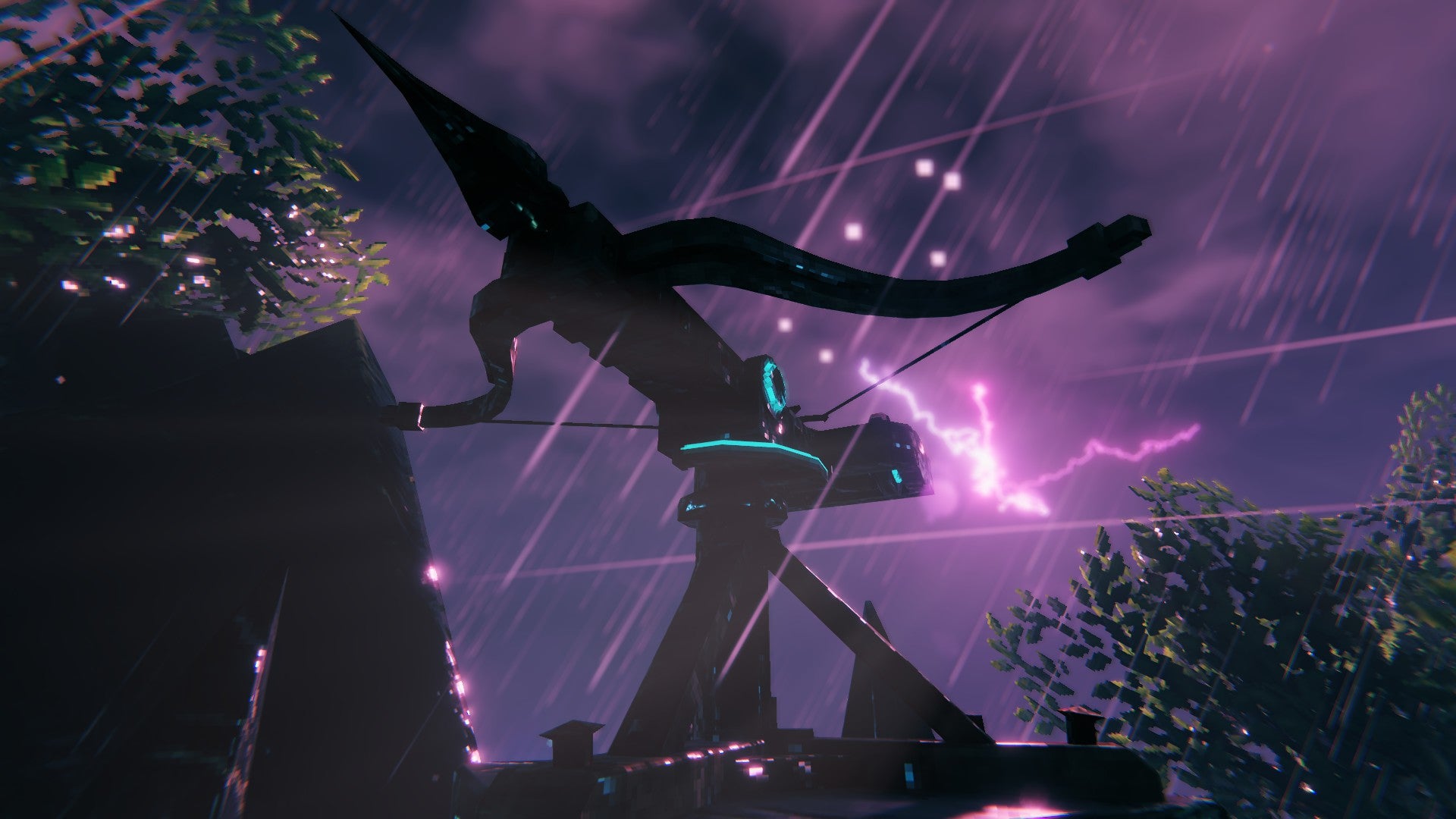The name hints at just how gruelling the Mistlands experience has been for much of the past month - specifically, since the update was released in early December until a patch was released earlier this week. Before the new biome was introduced, progression between Valheim’s regions always felt like a steady increase in challenge, with a small bump in difficulty when moving to a new environment. Progression in the freshly-released Mistlands biome, however, felt like running into a brick wall. A range of factors - including enemy behaviour, rugged terrain and crafting recipes - combined to make the biome so hostile that Valheim felt like a totally different game. With so much focus placed on making the new biome tough, some of Valheim’s other main appeals - exploration and building - suffered as a result. In seeking to resolve these problems, Valheim developer Iron Gate introduced some significant balance changes in a patch on Tuesday. But this shifted the balance too far in the opposite direction, with the biome now feeling like it lacks teeth. Which is a real shame, as the Mistlands has plenty of treats to offer - if only the path to finding them could be straightened out. As the sixth biome in Valheim’s progression system, the Mistlands was always supposed to be challenging. With only two further biomes left in Valheim’s development pipeline, the Mistlands is a mid to late-game area, and located towards the business end of the epic saga. Before the update landed last month, the region was populated with skulls and spiderwebs, leading many to assume it would be a repeat of the murk and mire of the Swamp. To everyone’s collective surprise, the reality turned out to be rather different. The Mistlands is actually a place of dazzling beauty: strange mushrooms sparkle and glow, giant skeletons and swords dot the landscape, and the mists sometimes part to reveal valleys filled with frolicking hares. Groups of friendly dwarves (called ‘dvergr’) inhabit the region, and often provide refuge for players travelling through the area. It’s an environment designed to entice players in: an other-worldly wonderland of magic. The Mistlands in its initial form didn’t give you much time to appreciate the scenery, however, as the intensity level immediately ramped up to 10. Fully-upgraded Plains gear wouldn’t save you here, as enemies would smack you down in a couple of hits. Massive flying bugs, once alerted to your presence, would chase you relentlessly through the valleys until you either died or managed to hide in a building (which they would then promptly demolish). I’m not opposed to having enemies that hit this hard - it actually pushed me into making tactical decisions like creating tunnels and kiting enemies towards dvergr bases. But in combination with other systems in the Mistlands, the combat became somewhat unmanageable. The Mistlands’ dense fog, while making the process of discovery exciting, also makes combat difficult to predict. The limited amount of visibility afforded to you - even with a wisplight or wisp torches - is tiny, and in the pre-patch version where the biome was filled with enemies, this really limited your ability to make smart combat decisions. In other biomes you could judge a situation from a distance, and then decide whether to enter the fray. In Mistlands version one, you would merely stumble into trouble, then stumble into more trouble when you ran away. Rather than providing a fair challenge, the combat became a matter of luck. The (still significant) problems with the Mistlands’ near-vertical terrain didn’t exactly help matters. The steep hills and enemy hordes highlighted a long-standing issue with Valheim’s combat, which is that while enemies can hit you from any direction, your own swings can only hit enemies on the same level as you. Any bugs either below or above you are almost unhittable with melee weapons, making this a big problem in a biome with barely any level ground. Valheim has also never been very generous with its stamina bar - particularly since the food system was split into ‘health’ and ‘stamina’ categories in the Hearth and Home update. The Mistlands’ sheer rock faces require constant jumping, which drains your stamina pretty quickly. In the the pre-patch version, it was all too easy to run straight into a wall, and then be helpless to escape the bugs as they swarmed you. In the face of these extreme combat and terrain challenges, I expected Valheim to at least give me the tools to deal with these obstacles. And it did, eventually: the feather cloak is a brilliant item that allows you to glide and avoid fall damage, suddenly making the biome traversable. The magic system, too, is a wonderful addition that broadens out Valheim’s combat system and encourages different roles within a party. A mage can cast protective spells, or take on a ranged role by zapping bugs with freezing spells - all lovely, fun stuff. Yet even in the current version, these options are held back from the player for a fair amount of time. In order to create the workbenches to craft these items, you have to get through several extremely tough dungeons to find ‘black cores’. A single crafting bench needs five: in our first two dungeons, we found a total of one. When the biome was initially so difficult to navigate, it took us dozens of hours to even reach these dungeons. In previous biomes, progress was bread-crumbed along at a steady rate - but in the original Mistlands, it felt like you got these rewards near the end of your journey, making it feel like a lot of struggle for little reward. The biome’s progression system still lacks a mid-way point, and I’m not sure why items that would really help in the area (like the feather cape) are held back for so long. In an interview for GamesRadar, the Iron Gate devs told me they had actually re-worked progression in the Mistlands before the biome’s release, as they felt players were initially able to unlock everything a little too fast. I suspect that in trying to spread progression across the biome, they overdid it a bit. A side-effect of creating such a harsh version of the Mistlands was that other ways of playing Valheim suffered as a result. In terms of exploration, the fog and enemy numbers made walking a slow-going and painful process. The fact that enemies could demolish buildings with a couple of hits meant that, for the most part, you didn’t want to create anything pretty there. Even the new building materials couldn’t hold the enemies back, and base defences like the ballista were incapable of protecting your home. The Mistlands was also released alongside a seeker raid capable of destroying beloved player homes in other biomes - something that Iron Gate has thankfully now removed. The focus on tough PvE survival also started to cause a rift in the player community between those who wanted an ultra-hard survival challenge, and those who preferred a mixture of combat, exploration and building. Until the Mistlands, it felt like Valheim was able to strike a fair balance between all aspects of its gameplay. The first version of Mistlands biome did difficulty in the wrong way: by making combat luck-based, unpredictable and frustrating. Valheim is often compared to soulslikes, but even FromSoft games like Elden Ring offer manageable encounters, with opportunities to ’take the long route’ by finding items to help you with combat if you’re struggling. The Mistlands expected you to keep throwing yourself at it until you unlocked all its gear. All of this brings us to the present day, in which Iron Gate has responded to these problems with a much-needed patch. The main changes here are to enemy behaviour: while the bugs still hit hard, there are noticeably fewer of them, and they no longer stalk you for miles. In fact, it’s now rather easy to run away, as they quickly become distracted and leave you alone. It may not sound like a major change, but the effect on the biome has been drastic: I can now walk around freely without being mobbed, and for the first time, I can venture solo through the lands without constantly dying. While this patch does make the biome feel more like Valheim - I can actually map out the surrounding area and poke around for resources - it also feels like something has been lost in the process. On the surface, the patch solves many of the biome’s problems: as enemies no longer apply constant pressure, the stamina and visibility issues are less urgent, and progression is much faster now that you can actually reach the infested mines. But the biome feels a lot emptier than before, and the feeling of threat is almost totally gone. Enemy behaviour certainly needed a tweak to prevent players from being overwhelmed, but it feels like this has gone too far, and the challenge of the Mistlands has been removed. Clipping the enemies’ wings feels like a band-aid solution to the array of other problems, like the stamina system, vertical combat and progression, that would perhaps take longer to sort out. In an ideal world I’d like to see Iron Gate provide challenging enemies (that don’t totally swarm you), while also implementing a progression mid-way point to give players some tools to deal with them at an earlier stage. The biome is obviously not beyond repair: it’s a gorgeous setting, full of vibrant new concepts and exciting equipment. It’s worth adding, too, that some of the non-Mistlands changes in the update have been fantastic - particularly the fishing rework, which encourages players to go in search of specific fish species. It’s the perfect incentive for further adventure - we ended up being fully jumpscared by a serpent, something that had never happened to us before, as the update encouraged us to linger in our boat. Yet I do hope Iron Gate reconsiders the road to Mistlands gear, and finds a balance between either having frustrating combat or a near-empty biome. Hopefully, with some further tinkering, the Mistlands will be able to reach the dizzying heights of its full potential.






